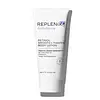What's inside
What's inside
 Key Ingredients
Key Ingredients

 Benefits
Benefits

 Concerns
Concerns

 Ingredients Side-by-side
Ingredients Side-by-side

Water
Skin ConditioningCaprylic/Capric Triglyceride
MaskingCyclopentasiloxane
EmollientGlycerin
HumectantSodium PCA
HumectantCetearyl Alcohol
EmollientDimethicone
EmollientPolysorbate 60
EmulsifyingYucca Glauca Root Extract
Skin ProtectingRetinol
Skin ConditioningSodium Hyaluronate
HumectantHydrolyzed Sodium Hyaluronate
Skin ConditioningLeontopodium Alpinum Callus Culture Extract
AntioxidantCeramide Ng
Skin ConditioningCeramide NP
Skin ConditioningCeramide AP
Skin ConditioningCeramide EOP
Skin ConditioningSqualane
EmollientCaffeine
Skin ConditioningResveratrol
AntioxidantCamellia Sinensis Polyphenols
AntioxidantBisabolol
MaskingPhytosphingosine
Skin ConditioningCholesterol
EmollientDimethicone Crosspolymer
Emulsion StabilisingGlyceryl Stearate
EmollientInulin Lauryl Carbamate
Emulsion StabilisingSodium Lauroyl Lactylate
EmulsifyingPolysorbate 20
EmulsifyingCarbomer
Emulsion StabilisingBehentrimonium Chloride
PreservativeSucrose Laurate
EmollientPEG-100 Stearate
Xanthan Gum
EmulsifyingTriethanolamine
BufferingCaprylyl Glycol
EmollientSorbic Acid
PreservativePhenoxyethanol
PreservativeDisodium EDTA
Water, Caprylic/Capric Triglyceride, Cyclopentasiloxane, Glycerin, Sodium PCA, Cetearyl Alcohol, Dimethicone, Polysorbate 60, Yucca Glauca Root Extract, Retinol, Sodium Hyaluronate, Hydrolyzed Sodium Hyaluronate, Leontopodium Alpinum Callus Culture Extract, Ceramide Ng, Ceramide NP, Ceramide AP, Ceramide EOP, Squalane, Caffeine, Resveratrol, Camellia Sinensis Polyphenols, Bisabolol, Phytosphingosine, Cholesterol, Dimethicone Crosspolymer, Glyceryl Stearate, Inulin Lauryl Carbamate, Sodium Lauroyl Lactylate, Polysorbate 20, Carbomer, Behentrimonium Chloride, Sucrose Laurate, PEG-100 Stearate, Xanthan Gum, Triethanolamine, Caprylyl Glycol, Sorbic Acid, Phenoxyethanol, Disodium EDTA
Ingredients Explained
These ingredients are found in both products.
Ingredients higher up in an ingredient list are typically present in a larger amount.
Disodium EDTA plays a role in making products more stable by aiding other preservatives.
It is a chelating agent, meaning it neutralizes metal ions that may be found in a product.
Disodium EDTA is a salt of edetic acid and is found to be safe in cosmetic ingredients.
Learn more about Disodium EDTAGlycerin is already naturally found in your skin. It helps moisturize and protect your skin.
A study from 2016 found glycerin to be more effective as a humectant than AHAs and hyaluronic acid.
As a humectant, it helps the skin stay hydrated by pulling moisture to your skin. The low molecular weight of glycerin allows it to pull moisture into the deeper layers of your skin.
Hydrated skin improves your skin barrier; Your skin barrier helps protect against irritants and bacteria.
Glycerin has also been found to have antimicrobial and antiviral properties. Due to these properties, glycerin is often used in wound and burn treatments.
In cosmetics, glycerin is usually derived from plants such as soybean or palm. However, it can also be sourced from animals, such as tallow or animal fat.
This ingredient is organic, colorless, odorless, and non-toxic.
Glycerin is the name for this ingredient in American English. British English uses Glycerol/Glycerine.
Learn more about GlycerinWater. It's the most common cosmetic ingredient of all. You'll usually see it at the top of ingredient lists, meaning that it makes up the largest part of the product.
So why is it so popular? Water most often acts as a solvent - this means that it helps dissolve other ingredients into the formulation.
You'll also recognize water as that liquid we all need to stay alive. If you see this, drink a glass of water. Stay hydrated!
Learn more about Water